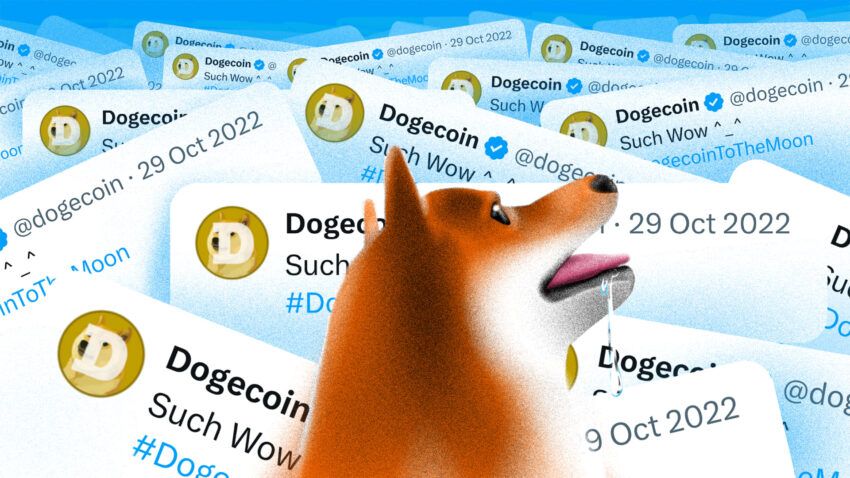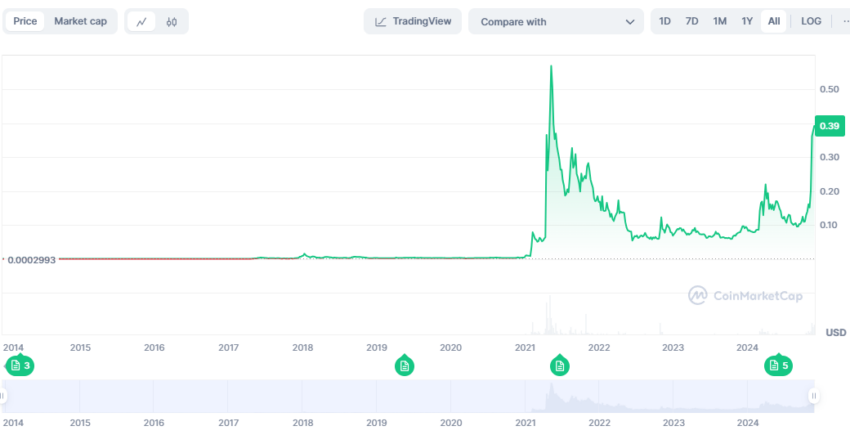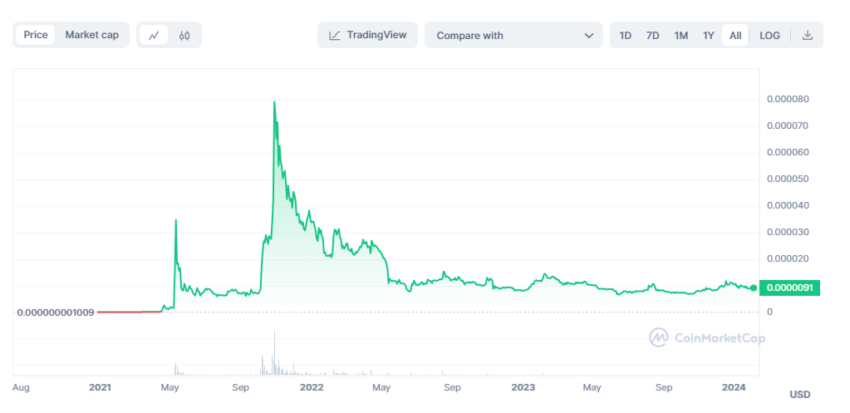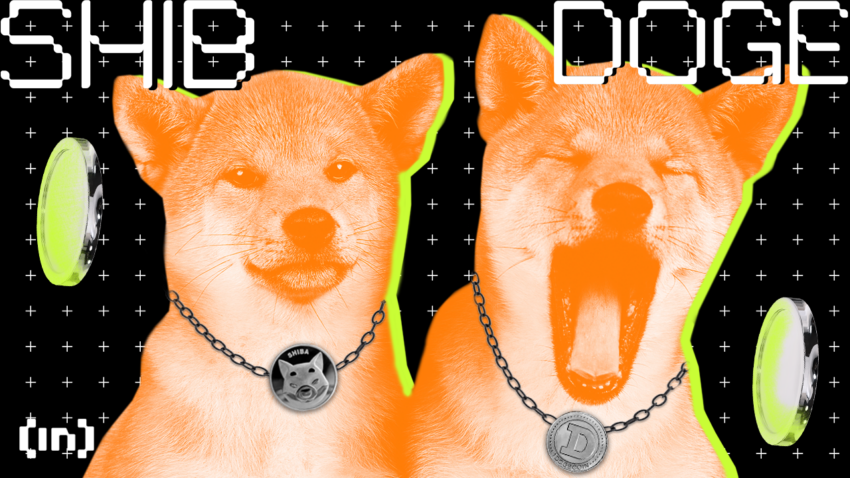Both Dogecoin and Shiba Inu started as satirical jokes but have evolved into significant players in the crypto space. Despite their shared dog theme, these cryptocurrencies have key differences. This guide will compare Dogecoin and Shiba Inu by examining their origins, capabilities, communities, and long-term viability. We will analyze their similarities and differences across essential categories such as tokenomics, supply schedules, and real-world utility to help investors decide which one holds more promise.
KEY TAKEAWAYS
➤ Dogecoin (DOGE) originated in 2013 as a joke before becoming a community-focused crypto with fast transactions.
➤ Shiba Inu (SHIB) was launched in 2020 as a meme coin focusing on building a decentralized ecosystem with governance tokens, NFTs, and more.
➤ DOGE features infinite supply and low fees, while SHIB adopts deflationary measures like token burning.
➤ Shiba Inu offers a meme-inspired DeFi ecosystem which spans governance tokens and NFTs. Meanwhile, Dogecoin focuses on simplicity and fast transactions.
What is Dogecoin?
Two online pals, software developers Billy Marcus and Jackson Palmer, launched Dogecoin in 2013 mostly as a practical joke. They had never met in person, just chatted on Reddit. The duo decided to fuse two hugely popular 2013 online trends — the fledgling cryptocurrency Bitcoin and the viral “Doge” meme with the Shiba Inu dog.
Yet, to their surprise, this meme-inspired creation quickly attracted a global following of enthusiastic crypto fans and investors. The lighthearted Dogecoin.com website logged over 1 million hits within its first month. Though started as a gag, Dogecoin operates as a bona fide cryptocurrency with its own blockchain and mining ecosystem.
➤ An active and cooperative Reddit subgroup fueled its initial success, with subscribers actively sending Dogecoin transactions to boost volume and share info to draw more into the playful community. Also, for most of its history, affordable Dogecoin prices — just tiny fractions of a penny — made the abundant coins more accessible.
What began as a joke quickly became a legitimate digital currency with a unique identity, providing a fun, approachable alternative to highly technical cryptocurrencies.
One of Dogecoin’s standout features is its passionate, engaged community, which is known for its charitable efforts, tipping culture, and social media campaigns. Tesla CEO Elon Musk has further fueled its popularity with tweets.
Unlike Bitcoin’s scarcity model, Dogecoin features an unlimited supply. Five billion new DOGE are minted yearly, categorizing it as an inflationary asset. This approach to tokenomics might not be the most bullish regarding price performance.
➤ DOGE or BTC? Check out our Dogecoin vs. Bitcoin comparison for a closer look at where the meme coin stand against the alpha-crypto.
While some users have sought more advanced alternatives given Dogecoin’s limited updates since 2015, its enduring and substantial market capitalization indicates the meme coin’s influence in the financial market.
Before we move on to the Dogecoin vs. Shiba Inu comparison, let’s first understand how Dogecoin works.
How Dogecoin works

Dogecoin was originally conceptualized as a more accessible and friendly alternative to Bitcoin.
It utilizes a proof-of-work (PoW) consensus mechanism, with Scrypt as its hashing algorithm. For those out of the loop, Scrypt is less resource-intensive than Bitcoin’s SHA-256, which helps it facilitate faster and more energy-efficient mining processes.
➤ By 2030, DOGE might end up crossing the $2.5 mark (based on our price prediction as of November 2024). Check out this Dogecoin price prediction piece for more insights and updates related to its price performance.
Unlike deflationary cryptocurrencies such as Bitcoin, Dogecoin was designed with an infinite supply. This encouraged its use for transactions rather than as a speculative asset.
Adding Dogechain as a secondary layer enhances the network by equipping it with smart contract abilities. This allows for the creation of decentralized applications (DApps) and the participation in decentralized finance (DeFi) ecosystems. Needless to say, these additions significantly expand its utility beyond simple transactions.
Additionally, Dogechain’s compatibility with the Ethereum Virtual Machine (EVM) ensures that developers can easily port applications from Ethereum. This results in a vibrant ecosystem around Dogecoin.
Key features and advantages of Dogecoin
- Low transaction fees: Dogecoin offers significantly lower transaction fees than many popular cryptocurrencies, making it attractive for smaller, everyday transactions.
- Fast transaction times: It provides quicker transaction confirmation times, ensuring faster processing and settlement. Dogecoin’s 1-minute transaction speed is the gold standard for layer-1 blockchains.
- Strong crypto community support: Dogecoin is backed by an active, supportive community known for charitable donations and social media engagement. This greatly contributes to the meme coin’s popularity and adoption.
- Infinite supply: Unlike many cryptocurrencies that have a cap on the number of coins, Dogecoin has no maximum supply. This makes DOGE a better fit for everyday transactions rather than hoarding as a store of value.
- Mining mechanism: Dogecoin uses a proof-of-work algorithm, but it’s based on the Scrypt hashing algorithm. This allows for faster and more energy-efficient mining compared to the SHA-256 algorithm used by Bitcoin.
- EVM compatibility: Dogecoin can integrate with the Ethereum ecosystem through Dogechain, which allows for migrating existing Ethereum smart contracts without modifications. This enhances its utility in decentralized applications.
- Cross-chain compatibility: Dogecoin facilitates easy transfer between networks through the Dogechain bridge. Thus, it enables Dogecoin to be wrapped for use on the Dogechain network and unwrapped when returning to the Dogecoin network. This feature ensures fluid movement across blockchain environments, which, in turn, widens its applicability.
Criticism of Dogecoin
Dogecoin has long evolved past its humorous origins. It now boasts a substantial market presence.
➤ Notwithstanding that fact, the meme coin continues to face criticism over perceptions that its unconstrained supply and susceptibility to social media swings undermine practical utility. Plus, there aren’t adequate Dogecoin use cases to stand the test of time, especially in bearish markets.
Detractors argue that the altcoin’s architecture is better suited to a trendy meme than an enduring cryptocurrency. Specifically, they highlight how its inflationary tokenomics contrasts with the capped scarcity that underpins mainstream coins like Bitcoin.
This sparks debates on whether Dogecoin can establish itself as a stable currency amidst uncapped supply and highly reactive valuations. However, proponents counter that its supply mechanics and lighthearted brand carry distinct advantages. They offer greater access and approachability for regular consumers intimidated by traditional cryptocurrencies.
The community also points to expanding merchant adoption and development on the Dogechain, which supports more meaningful real-life applications.
What is Shiba Inu?

Here’s how Shiba Inu works and some of its key features. Shiba Inu (SHIB) emerged as a playful contender to Dogecoin. It debuted in 2020, seven years after the launch of DOGE. Shytoshi Kusama, the mastermind behind the meme coin, remains unidentified to date.
Despite the veil of anonymity surrounding their true identity, Kusama has done a neat job steering the project’s course since its launch. He is backed by the ShibArmy, an active community of developers and supporters loyal to the project.
Beyond the Shiba Inu branding and token functionality, developers are actively focusing on constructing an entire ecosystem. This ecosystem includes:
- A decentralized exchange called ShibaSwap for swapping tokens
- Shiboshi NFTs
- Plans for a layer-2 blockchain dubbed Shibarium are also in the works
These concerted efforts toward meaningful utility have fueled Shiba Inu’s public positioning as a “Dogecoin killer.”
➤ If investing in meme coins is your thing, SHIB might just have the legs to go as high as $0.000629 by 2030, led by multiple use cases. Here is the detailed SHIB price prediction piece to help you track the price performance.
How does Shiba Inu work?
➤ At the heart of the Shiba Inu ecosystem is SHIB, the native asset on the network. It is an Ethereum-based ERC-20 token that started with a vast initial supply of one quadrillion tokens.
However, the team overseeing the project has locked up the majority of this total supply, meaning they are not in circulation. They did so to control and manage liquidity. They also burned a big chunk of the remaining supply further to limit the total number of tokens in circulation.
Alongside SHIB, the ecosystem features two more tokens: LEASH and BONE. Each of these tokens serves a distinct role.
LEASH rewards dedicated members of the community with exclusive benefits. For example, access to special NFT minting and early entry to land sales in the upcoming Shiba Inu Metaverse.
Meanwhile, BONE serves as a governance token and plays a key role in community engagement and decision-making. BONE holders can vote on proposals that impact the future of the Shiba Inu ecosystem.
BONE has a comparatively bigger supply between the two. With 250 million tokens in total, it is more accessible to a wider range of community members.
Shiba Inu key features
- The Shiba Inu burn rate is deflationary; the network’s token burn mechanism permanently destroys a percentage of each transaction. This gradually lowers the circulating supply over time.
- Decentralized community-first development principles underpin the entire Shiba Inu ecosystem. It has no centralized leadership or authority.
- Beyond the flagship SHIB token, the project consists of a layer-2 blockchain called Shibarium, the decentralized exchange ShibaSwap, Shiboshi NFT collection, and an emerging Shiba Inu metaverse and play-to-earn game Shiba Eternity.
- ShibaSwap operates as a decentralized exchange or trading platform for secure cryptocurrency swapping. Native tokens such as SHIB and LEASH are generally the preferred options.
- The Shiba Inu Incubator aims to nurture creative talent across artistic mediums, not just traditional formats like paintings or photography.
- The Shiboshis are 10,000 procedurally generated NFTs on Ethereum, with unique trait combinations giving each individual Shiboshi collectible value and scarcity.
Criticism against Shiba Inu
Just like DOGE, Shiba Inu faces criticism primarily for its origins as a meme coin. Skeptics argue its meme coin origin limits its potential for serious financial investment.
➤ Critics also highlight its massive supply and the speculative nature of its market value, which is mostly driven by social media and influencer promotion rather than intrinsic utility or technological innovation. On that count, it suffers (or is perceived to suffer) from the same drawbacks as Dogecoin.
“Brands will be brands. Meme coins will only have a future if they develop use cases and ecosystems.”
Clem Chambers, Founder of Umbria Network: BeInCrypto interview
urthermore, the project’s reliance on community-driven development, while innovative, raises questions about its long-term sustainability and governance structure.
Dogecoin vs. Shiba Inu: Market cap and price history
Dogecoin ascended from fractions of a penny to an impressive peak of $0.7376 in May 2021.
As of Nov. 29, 2024, DOGE has a market cap of roughly $60 billion and its price is hovering just over of $0.41, per CoinMarketCap data. Check out our detailed DOGE price prediction guide for an up-close view of possible price moves in the coming months.

As of Nov. 29, 2024, Shiba Inu is priced at around $0.000025 and its market cap stands at approximately $13.25 billion.
Both assets reached their respective peaks on the back of fanatic community momentum. While both have come a long way from their humor-filled origins, they remain prone to wild price fluctuations. Dogecoin typically trades below $1, carrying lower risk than high-priced assets like Bitcoin despite erratic swings. Similarly, despite its fluctuating value and discussions around its supply strategy, SHIB remains a key player in the market.

Dogecoin vs. Shiba Inu: Key differences
- Dogecoin uses a proof-of-work algorithm on its own blockchain, whereas Shiba Inu uses Ethereum’s infrastructure as an ERC-20 token minted via proof-of-stake.
- Shiba Inu has introduced BONE to empower token holders to participate in voting and administrative decisions. In contrast, Dogecoin lacks an associated governance token.
- Dogecoin prioritizes community engagement and meme culture in its tokenomics. Meanwhile, Shiba Inu’s model provides ecosystem utility incentives and rewards for holders.
- Shiba Inu was originally launched with a deflationary 1 quadrillion token distribution that has undergone certain strategic changes, including token lock-up and burning. In comparison, Dogecoin supply is uncapped and has no maximum limit.
- Dogecoin operates as a digital currency primarily focused on peer-to-peer transactions, whereas Shiba Inu takes a multi-token approach toward building a decentralized finance ecosystem.
Dogecoin vs. Shiba Inu: Similarities
- Both projects originated as meme-themed cryptocurrencies. Both are inspired by the popular Shiba Inu dog meme.
- Shiba Inu and Dogecoin have cultivated highly devoted grassroots communities that have become key drivers of awareness and adoption.
- Despite beginnings rooted in humor and internet meme culture, both assets now aim to transition toward bona fide utility and real-world use cases.
- The two cryptocurrencies exhibit comparable volatility and price speculation, often fueled by social media momentum and prominent figures like Elon Musk.
- Shiba Inu and Dogecoin offer substantially lower price points than Bitcoin. This provides potential investors with much more accessible investment entry points.
- Both assets face ongoing skepticism regarding sustainability. However, the communities supporting both assets counter-argue by highlighting expanding acceptance and development activity.
- The expected price performance of both these cryptocurrencies is bullish, making investing in meme coins trendy.
DOGE vs SHIB in a nutshell
| Dogecoin | Shiba Inu | |
| Created in | Dec. 6, 2013 | Aug. 1, 2020 |
| Market capitalization (as of press time) | $60 billion (approx. as of Nov. 29, 2024) | $13.25 billion (approx. as of Nov, 29, 2024) |
| Coins in circulation (as of press time) | 146.99 billion DOGE (approx. as of Nov. 29, 2024) | 589.51 trillion SHIB (approx. as of Nov. 29, 2024) |
| Ranking (by market cap) | 7 (as of Nov. 26, 2024) | 13 (as of Nov. 26, 2024) |
| Technology | Scrypt-based proof-of-work (PoW) | ERC-20 token on Ethereum (moving to Shibarium) |
| Maximum coin supply | Infinite (10,000 new blocks mined daily) | 1 quadrillion (vast majority locked or burned) |
| Average transaction time | 1 min (approx.) | 13-15 seconds (on Ethereum, faster on Shibarium) |
| Transaction fees | Low | Varies depending on Ethereum network congestion |
| Price volatility | High | Very high |
| Security | Relatively secure, but vulnerable to “51% attacks” | 540 TH/s |
| Mining | Can be mined | Can’t be mined |
Dogecoin vs. Shiba Inu: Which one makes a better investment?
When it comes to the fierce Dogecoin vs Shiba Inu rivalry, both meme coins brandish distinct strengths. They both justify their dynamic communities and billion-dollar valuations. However, steep volatility and uncertainty around long-term viability remain prevailing risks. Ultimately, choosing between Dogecoin and Shiba Inu depends largely on your personal risk tolerance and timeline.
While Shiba Inu offers tempting upside potential, Dogecoin’s first-mover status and commanding market presence provide a relatively stable harbor for weathering crypto’s storms. For investing focused on hype-fueled gains, SHIB beats out DOGE — but those prioritizing established technicals over pipe dreams may prefer DOGE’s proven staying power.
Disclaimer: This article is for informational purposes only and should not be considered financial advice. Always do your own research.
Frequently asked questions
Shiba Inu is a cryptocurrency meme token created by an anonymous founder, Ryoshi. Similar to Dogecoin, it is inspired by the Doge meme, which features a Shiba Inu dog. The token even refers to itself as the “Dogecoin killer.”
In 2013, Dogecoin (DOGE) was launched as a fun alternative to traditional cryptocurrencies like Bitcoin. Its name and Shiba Inu mascot stem from a well-known meme. Unlike Bitcoin, which has a limited supply, Dogecoin generates 10,000 new coins every minute with no cap on the total supply.
The main differences between Shiba Inu (SHIB) and Dogecoin (DOGE) lie in their origins, supply, and ecosystems. Dogecoin, created as a joke in 2013, has an uncapped supply, leading to inflationary characteristics. Shiba Inu, launched in 2020, has a capped supply and burns tokens to reduce circulation, making it deflationary.
As with any cryptocurrency, volatility remains an ever-present threat with Dogecoin. Its price is subject to potentially severe fluctuations driven by hype, social media, technical elements, and broader crypto market swings. In terms of network security, Dogecoin has so far maintained a good track record, although it may be vulnerable to 51% attacks.
Disclaimer
In line with the Trust Project guidelines, the educational content on this website is offered in good faith and for general information purposes only. BeInCrypto prioritizes providing high-quality information, taking the time to research and create informative content for readers. While partners may reward the company with commissions for placements in articles, these commissions do not influence the unbiased, honest, and helpful content creation process. Any action taken by the reader based on this information is strictly at their own risk. Please note that our Terms and Conditions, Privacy Policy, and Disclaimers have been updated.




